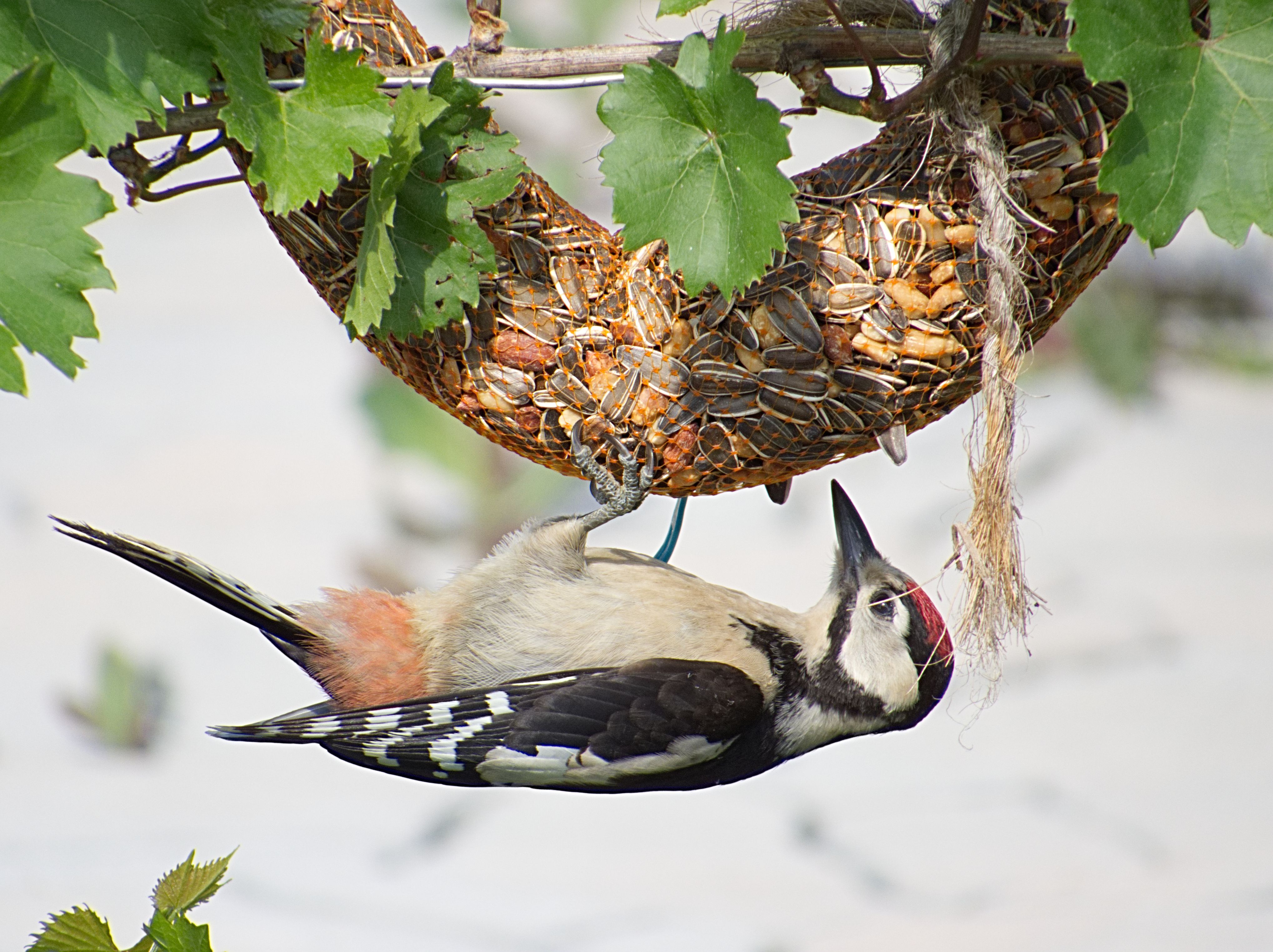English
The great spotted woodpecker (Dendrocopos major) is a medium-sized woodpecker with pied black and white plumage and a red patch on the lower belly. Males and young birds also have red markings on the neck or head. This species is found across Eurasia and parts of North Africa. Across most of its range it is resident, but in the north some will migrate if the conifer cone crop fails. Some individuals have a tendency to wander, leading to the recent recolonisation of Ireland and to vagrancy to North America. Great spotted woodpeckers chisel into trees to find food or excavate nest holes, and also drum for contact and territorial advertisement; they have anatomical adaptations to manage the physical stresses from the hammering action.
The great spotted woodpecker occurs in all types of woodlands and is catholic in its diet, being capable of extracting seeds from pine cones, insect larvae from inside trees or eggs and chicks of other birds from their nests. It breeds in holes excavated in living or dead trees, unlined apart from wood chips. The typical clutch is four to six glossy white eggs. Both parents incubate the eggs, feed the chicks and keep the nest clean. When the young fledge they are fed by the adults for about ten days, each parent taking responsibility for feeding part of the brood.
(Wikipedia)
German
Der Buntspecht (Dendrocopos major, Syn.: Picoides major) ist eine Vogelart aus der Familie der Spechte (Picidae). Der kleine Specht besiedelt große Teile des nördlichen Eurasiens sowie Nordafrika und bewohnt Wälder fast jeder Art sowie Parks und baumreiche Gärten.
Die Nahrung wird in allen Strata des Waldes (mit Ausnahme des Waldbodens) gesucht, jedoch vor allem in den Baumkronen. Sie besteht sowohl aus tierischen Anteilen als auch, vor allem im Winter, aus pflanzlichem Material.
Das Nahrungsspektrum ist sehr breit und umfasst verschiedenste Insekten und andere Wirbellose ebenso wie kleine Wirbeltiere und Vogeleier, Samen, Beeren und andere Früchte sowie Baumsäfte.
(Wikipedia)

awesome :D
Downvoting a post can decrease pending rewards and make it less visible. Common reasons:
Submit
:D thanks :D
Downvoting a post can decrease pending rewards and make it less visible. Common reasons:
Submit
wow sehr sehr schönes Foto! Sehr schönes Tier!
Downvoting a post can decrease pending rewards and make it less visible. Common reasons:
Submit
Dankeschön :) Es waren bis zu drei im Garten aber leider nie alle am selben Ort.
Downvoting a post can decrease pending rewards and make it less visible. Common reasons:
Submit
Tolles Bild!
Downvoting a post can decrease pending rewards and make it less visible. Common reasons:
Submit
Vielen Dank :)
Downvoting a post can decrease pending rewards and make it less visible. Common reasons:
Submit
Downvoting a post can decrease pending rewards and make it less visible. Common reasons:
Submit
thank you :)
Downvoting a post can decrease pending rewards and make it less visible. Common reasons:
Submit